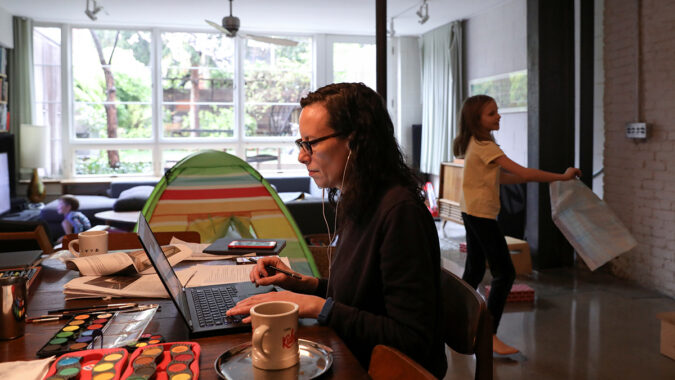
Americans are streaming back to their pre-pandemic working environments, however most workplaces are still generally unfilled. Furthermore, that is influencing nearby economies in a significant manner.
Love it or disdain it, driving is useful for the economy. You pay train conductors’ pay rates with your metro passage. The laundry by the workplace and the café around the bend all rely on laborers who have been to a great extent missing for almost eighteen months.
In 2020, the quantity of individuals telecommuting almost multiplied, to 42% of America’s labor force, as per the Bureau of Labor Statistics.
Also, albeit numerous specialists might lean toward that arrangement, remaining at home is probably going to postpone the recuperation of the fundamental office-contiguous economy.
As per market analysts from Goldman Sachs (GS), office participation in enormous US urban communities is just around 33% of pre-pandemic levels. That is a ton of representatives who are as yet working distantly and not spending cash on things like train tickets or lattes — the sort of monetary movement is fundamental in America’s shopper spending and administration driven economy.
For instance, in New York — one of urban areas hit hardest toward the beginning of the episode — tram ridership is as yet not even 50% of what it was pre-pandemic, as indicated by information from the Metropolitan Transportation Authority.
To place this in context, New York’s public vehicle framework is the biggest in the country and at the core of the city’s financial force. Prior to Covid, it got almost $17 billion in income. In any case, with ridership actually discouraged, income expectations have been sliced, as well. The Metropolitan Transit Authority got almost $4 billion in government financing through the CARES Act, yet admission and cost incomes aren’t relied upon to return to their past levels until 2023, as indicated by a report from the Office of the New York State Comptroller recently.
Different organizations that specialists continuous while heading to the workplace are likewise battling.
For Starbucks (SBUX), the deficiency of that day by day buyer is burdening the reality. Last quarter, the espresso chain’s normal in-store exchanges were at 90% of pre-pandemic levels.
“We certainly have the ability to bring more customers in, but our opportunity is the frequency of those customers,” Starbucks CFO Rachel Ruggeri said on an earnings call.
As a worldwide espresso behemoth, Starbucks has a fortitude that more modest, neighborhood coffeehouses don’t have.
With regards to lunch, salad chain Just Salad has resumed the entirety of its areas and said business is getting consistently. “We expect that to accelerate even more after Labor Day,” when more representatives are scheduled to get back to face to face work, Just Salad’s CEO Nick Kenner revealed to CNN Business in an email.
Drag on the recuperation
Be that as it may, the designated September get back to the workplace is in risk for some organizations. The quick spread of the more irresistible Covid-19 Delta variation is another obstacle to in-person work.
Tech goliaths Apple (AAPL) and Google (GOOG) have effectively pushed back the dates for the workplace return.
Further confusing the re-visitation of the workplace, the Centers for Disease Control and Prevention switched its veil direction last week, encouraging even immunized Americans in high-transmission regions to wear covers inside — another improvement that could muddle the re-visitation of in-person work and moderate the speed of the more extensive financial recuperation.
Regardless of when it truly occurs, the manner in which we work has for all time changed for some callings: Remote work and mixture in-office models are possible digging in for the long haul as one of the traditions of the pandemic.
This is awful information for the metropolitan regions and states that vigorously depend on the administrations area, be it through laborers or vacationers, including Hawaii, Las Vegas and New York. Those spots are falling behind in the recuperation.
Indeed, even those got back to may not be prepared or ready to return full-time, refering to issues like youngster care difficulties or living with in danger relatives.
The work market is adjusting to that, as well.
“Job ads increasingly offer remote work and surveys indicate that both workers and employers expect work from home to remain much more common than before the pandemic,” Goldman Sachs economists said in a note to clients.
Disclaimer: The views, suggestions, and opinions expressed here are the sole responsibility of the experts. No Biz Economics journalist was involved in the writing and production of this article.
